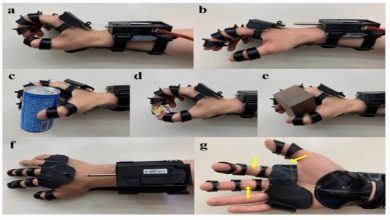Beyond Vulnerability Scanning: The Value of Human-Driven Pentesting

Vulnerability scanning is a crucial part of any cybersecurity program. Think of it as an automated security checkup that identifies known weaknesses in your systems. But is it enough to rely solely on automated scans?
While vulnerability scanners are excellent at finding common, well-documented vulnerabilities, they often fall short when it comes to uncovering the more complex, subtle, and business-logic flaws that a human pentester can identify. That’s where the value of human-driven pentesting comes in.
The Limitations of Automated Scans
Vulnerability scanners are essentially sophisticated software programs that compare your systems against a database of known vulnerabilities. They are great at identifying things like outdated software, missing patches, and misconfigurations. And they can do this quickly and efficiently across a large number of systems. This makes them an essential tool for any organization.
However, vulnerability scanners have inherent limitations. They operate based on predefined rules and signatures. So, they can only find what they’ve been programmed to find. They lack the creativity, intuition, and contextual understanding that a human pentester brings to the table. And they often generate a large number of false positives, which can waste valuable time and resources. They can tell you that a vulnerability exists, but they can’t tell you how it might be exploited in the context of your specific business. They can be limited to identify vulnerabilities related to business logic or those that arise from the complex interaction between multiple systems.
Creativity Meets Security
Human-driven pentesting, on the other hand, goes beyond simply identifying known vulnerabilities. It involves skilled ethical hackers who simulate real-world attacks to uncover weaknesses that automated scanners miss. These professionals bring a unique blend of technical expertise, creative problem-solving, and an understanding of attacker behavior. But their value goes beyond just their technical skills.
And they can think like an attacker. They can chain together multiple seemingly minor vulnerabilities to create a major breach. They can exploit business logic flaws that would never be flagged by a scanner. They can also adapt to your specific environment, tailoring their approach to the unique characteristics of your systems and applications. For example, a human pentester might identify a weakness in your web application’s authentication process that allows them to bypass security controls and gain access to sensitive data. Or they might discover a flaw in your network configuration that enables them to move laterally across your network and compromise critical systems.
Uncovering Business Logic Flaws
One of the key areas where human pentesters excel is in identifying business logic flaws. These are vulnerabilities that arise from the way an application or system is designed to function, rather than from a specific coding error. And these types of flaws are often deeply embedded in the application’s logic, making them difficult for automated scanners to detect.
But a human pentester can analyze the application’s workflow, understand its intended purpose, and identify potential security loopholes. For example, they might find a way to manipulate the pricing of items in an e-commerce application or bypass the authorization checks in a financial system. These types of vulnerabilities can have serious consequences, leading to financial losses, data breaches, and reputational damage. And they can be used by attackers to commit fraud, steal sensitive data, or disrupt business operations.
Understanding Your Unique Risk Profile
Another crucial advantage of human-driven pentesting is the ability to understand the context of your business and your unique risk profile. A vulnerability scanner can tell you that a particular system is vulnerable, but it can’t tell you how that vulnerability impacts your specific business operations.
A human pentester, on the other hand, can assess the potential impact of a vulnerability in the context of your business. They can help you prioritize remediation efforts based on the severity of the risk. They can also take into account factors such as your industry, your regulatory environment, and your overall security posture. And a good pentester will work with you to understand your business objectives, your critical assets, and your threat model. This collaborative approach ensures that the pentesting engagement is tailored to your specific needs and provides the most value.
Communication and Collaboration
Human-driven pentesting is not just about finding vulnerabilities; it’s also about communicating those findings effectively and collaborating on remediation. A skilled pentester will be able to explain complex technical issues in a clear and concise manner, both to technical and non-technical audiences. And they will be able to provide actionable recommendations that are tailored to your specific environment and resources.
But the best pentesters go beyond simply delivering a report. They will work with your team to ensure that the findings are understood, that the remediation plan is effective, and that your overall security posture is improved. They can provide ongoing support and guidance, helping you to stay ahead of the evolving threat landscape. And they may even offer on-demand access to their team to quickly get answers to questions and maintain a high level of security between assessments.
How Siemba Can Help
Vulnerability scanning is an important part of a comprehensive security program. But it’s not a silver bullet. Human-driven pentesting provides a deeper level of analysis, uncovers vulnerabilities that scanners miss, and provides valuable context and insights. And by combining the power of automation with the creativity and expertise of human ethical hackers, organizations can achieve a more robust and resilient security posture.
Siemba recognizes the limitations of relying solely on automated tools.Our offensive security platform is designed to augment these tools with on-demand access to a team of threat-intelligence-driven ethical hackers. Our platform includes advanced capabilities like Generative Penetration Testing (GenPT) and Generative Vulnerability Assessments (GenVA), offering a more dynamic and comprehensive approach to identifying security weaknesses. And, everything is supported by our Artificially Intelligent Security Officer (AISO), demonstrating a commitment to innovation in the field of cybersecurity.
With Siemba, you get the best of both worlds: cutting-edge technology and experienced human expertise, empowering your organization to go beyond basic vulnerability scanning and achieve a truly proactive and resilient security posture.




